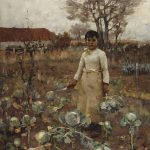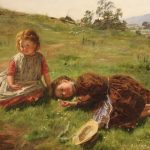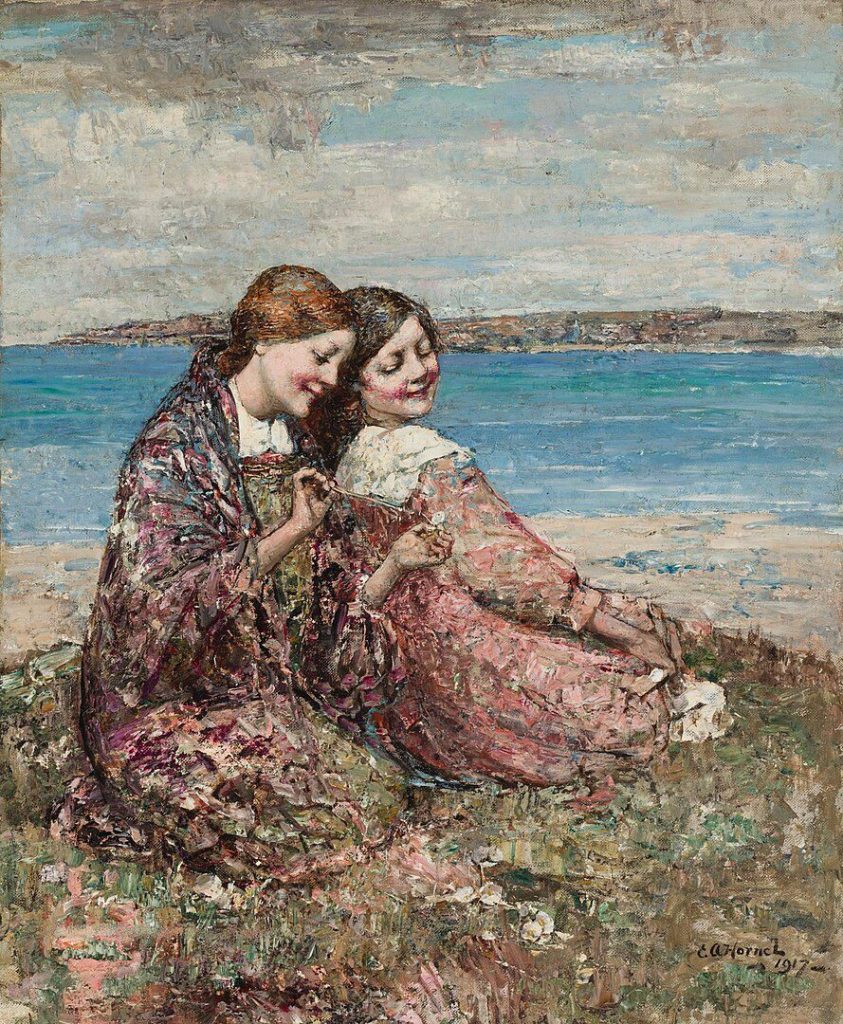
Edward Atkinson Hornel (1864-1933) was a Scottish painter, known for his distinctive style that combines elements of naturalism with a decorative approach influenced by the Glasgow School and Japonisme. Hornel was born on July 17, 1864, in Bacchus Marsh, Australia, but his family returned to Scotland in his childhood, where he would spend the majority of his life and career, deeply embedded in the Scottish art scene.
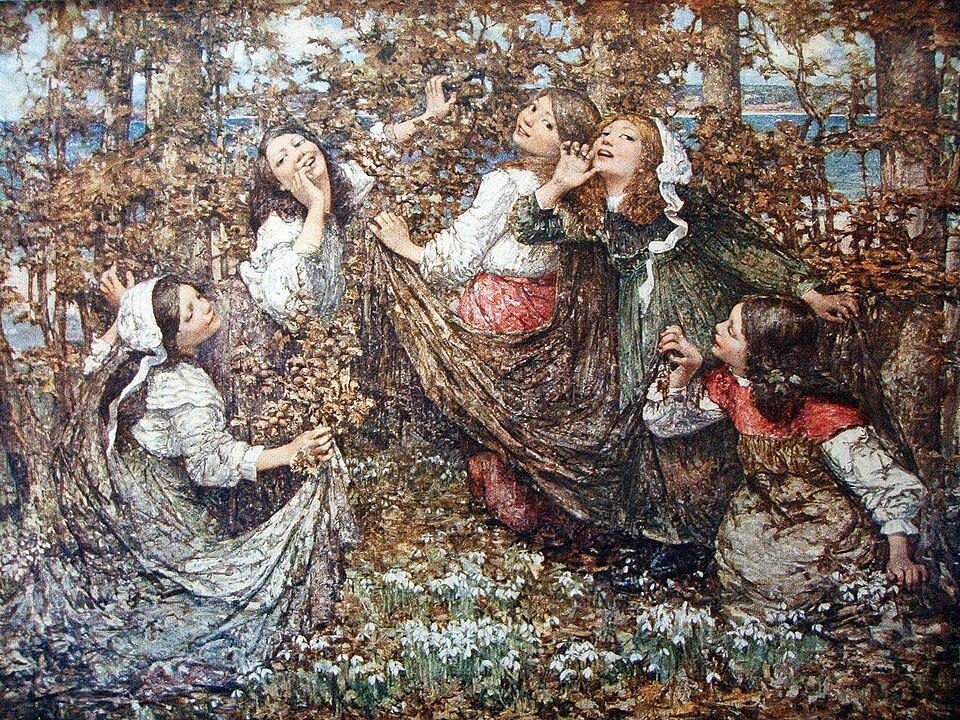
Hornel’s artistic journey began at the Edinburgh School of Art, followed by further studies at the Antwerp Academy. These formative years were crucial in developing his technical skills and exposing him to a range of artistic influences.
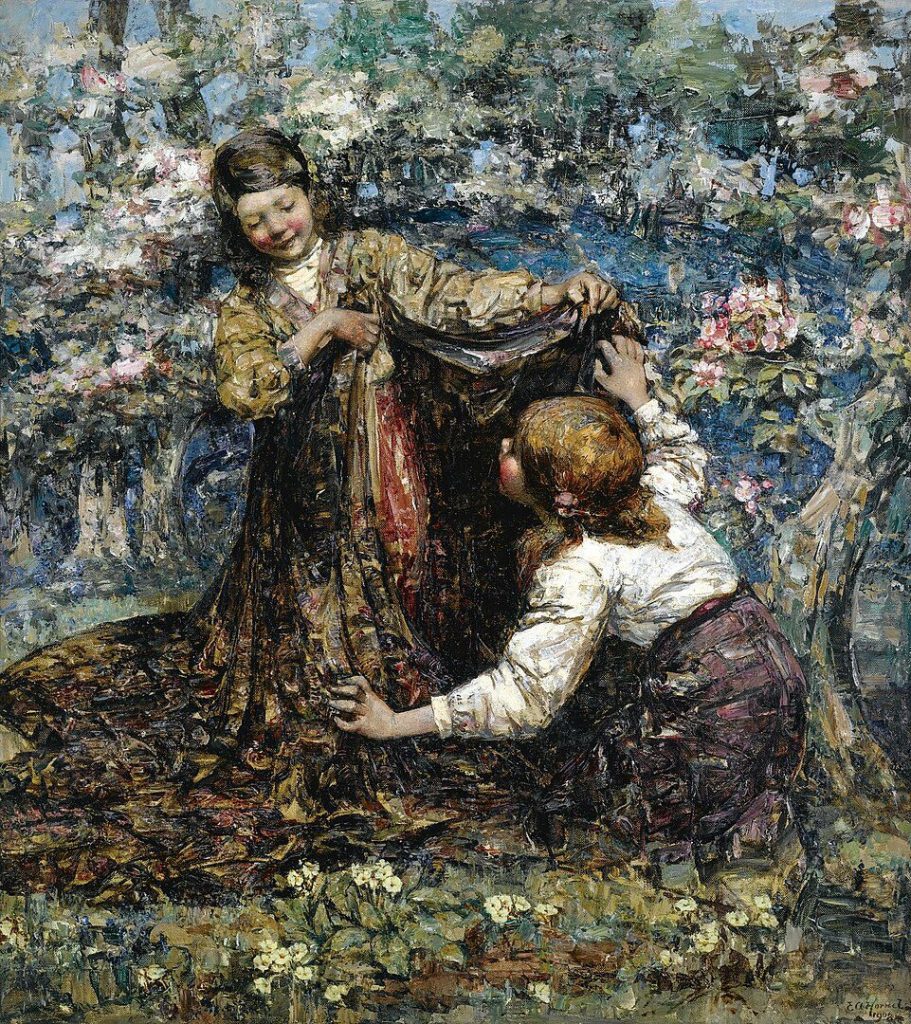
However, his association with the Glasgow Boys, a group of like-minded artists seeking to challenge the conventions of the Victorian art world, would significantly impact his development as an artist. The Glasgow Boys were keen on incorporating elements of realism, impressionism, and Japanese art into their work, which resonated with Hornel’s own artistic inclinations.
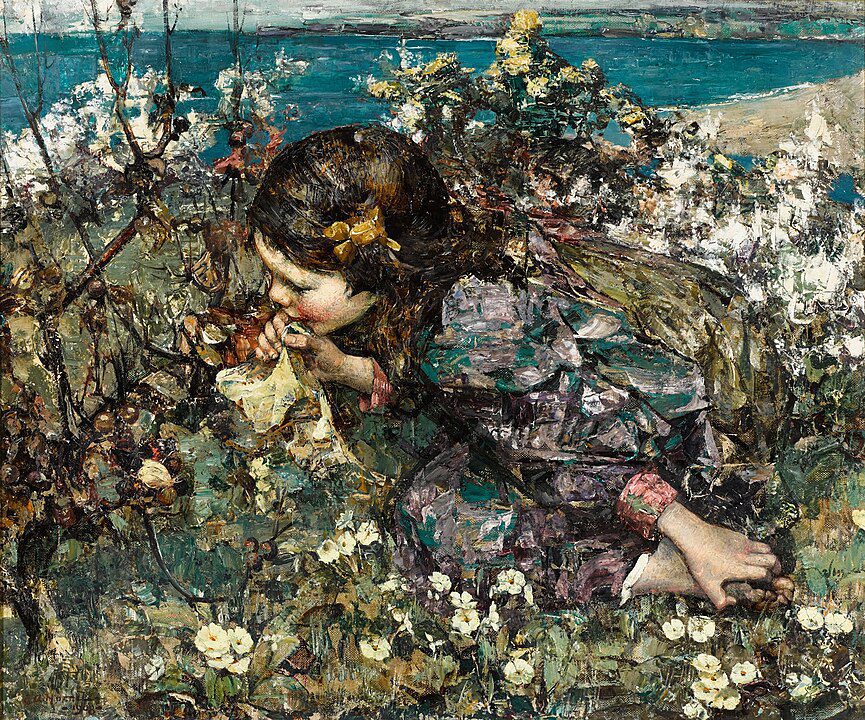
In the late 1880s and early 1890s, Hornel began to develop his signature style, characterized by a vibrant palette, thick impasto, and a focus on decorative patterns. His subjects often included scenes of children playing in lush, verdant landscapes, inspired by the countryside around Kirkcudbright, Scotland, where he settled. These works are notable for their dreamy, almost mystical quality, and their emphasis on the harmony between humans and nature.
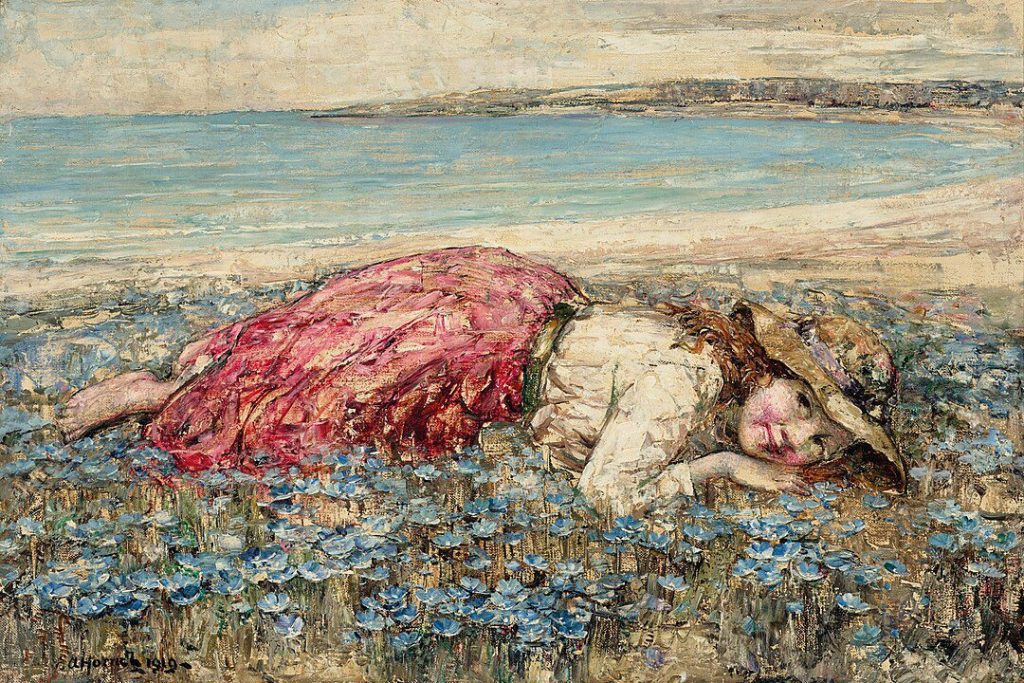
Hornel’s interest in Japanese art was particularly influential. After a trip to Japan in 1893 with fellow artist George Henry, Hornel’s work increasingly incorporated the compositional techniques, flat areas of color, and decorative motifs characteristic of Japanese prints. This fusion of East and West in his paintings contributed to their unique and recognizable aesthetic.
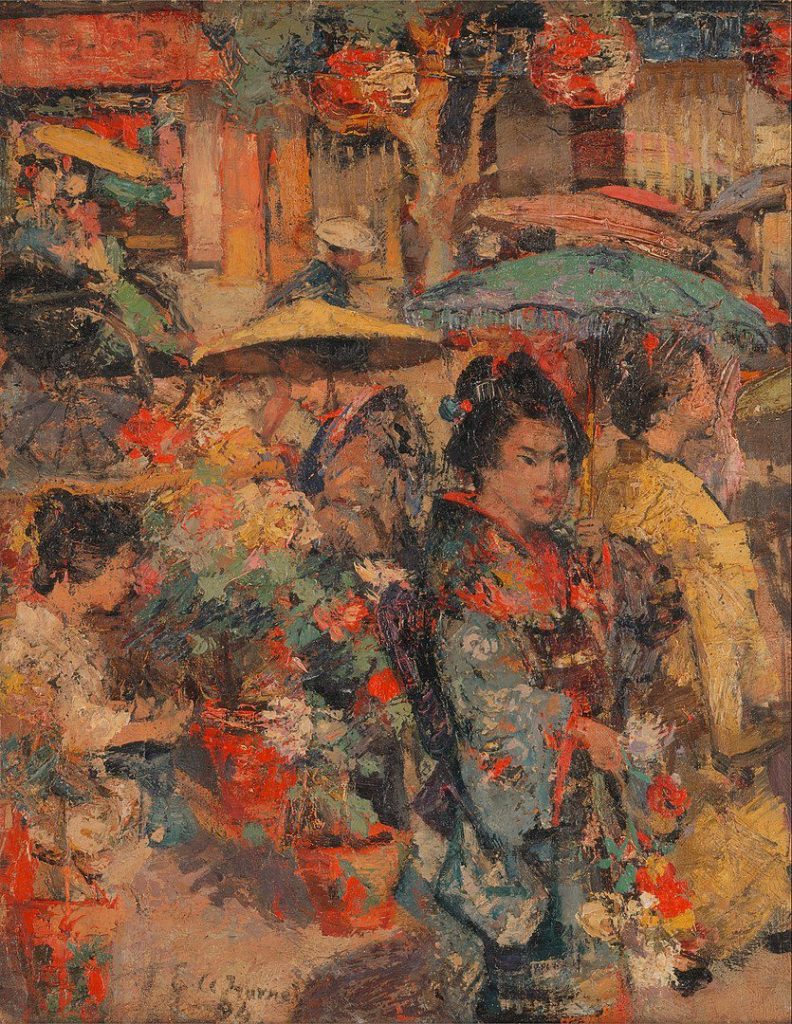
Throughout his career, Hornel was an active participant in the Scottish art community. He was involved with the Glasgow Art Club and exhibited widely, both in the United Kingdom and internationally, achieving considerable success and recognition. His work was celebrated for its distinctive blend of realism and decoration, and for its evocative portrayal of Scottish and Asian themes.
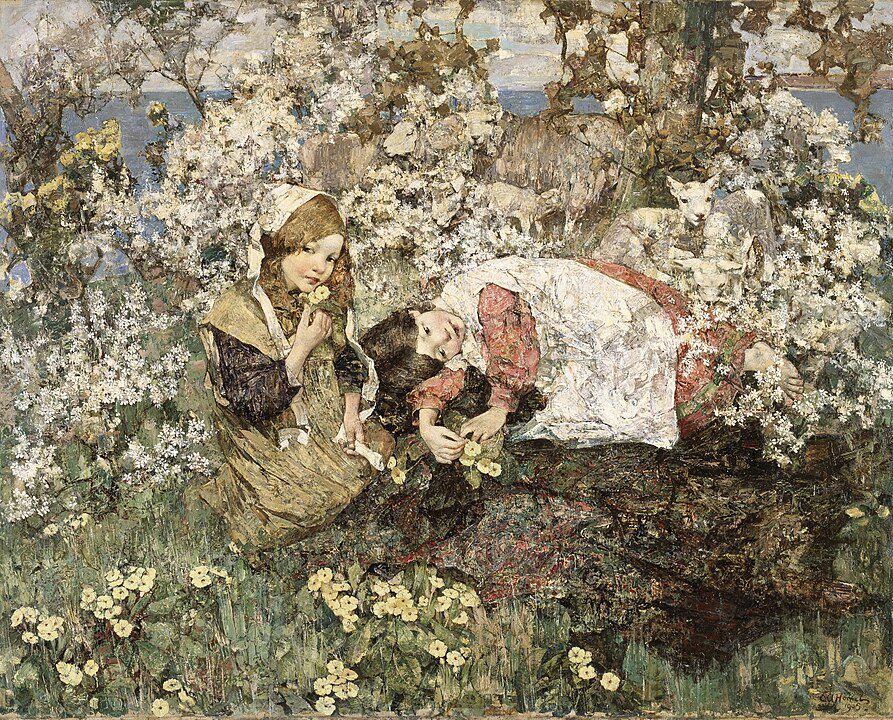
Beyond his painting, Hornel was also a collector and patron of the arts. He amassed a significant collection of art and artifacts, particularly of Japanese origin, which he donated to the city of Kirkcudbright. This collection, along with his personal papers, provides valuable insight into his interests and the wider cultural exchanges between the West and Japan during the late 19th and early 20th centuries.
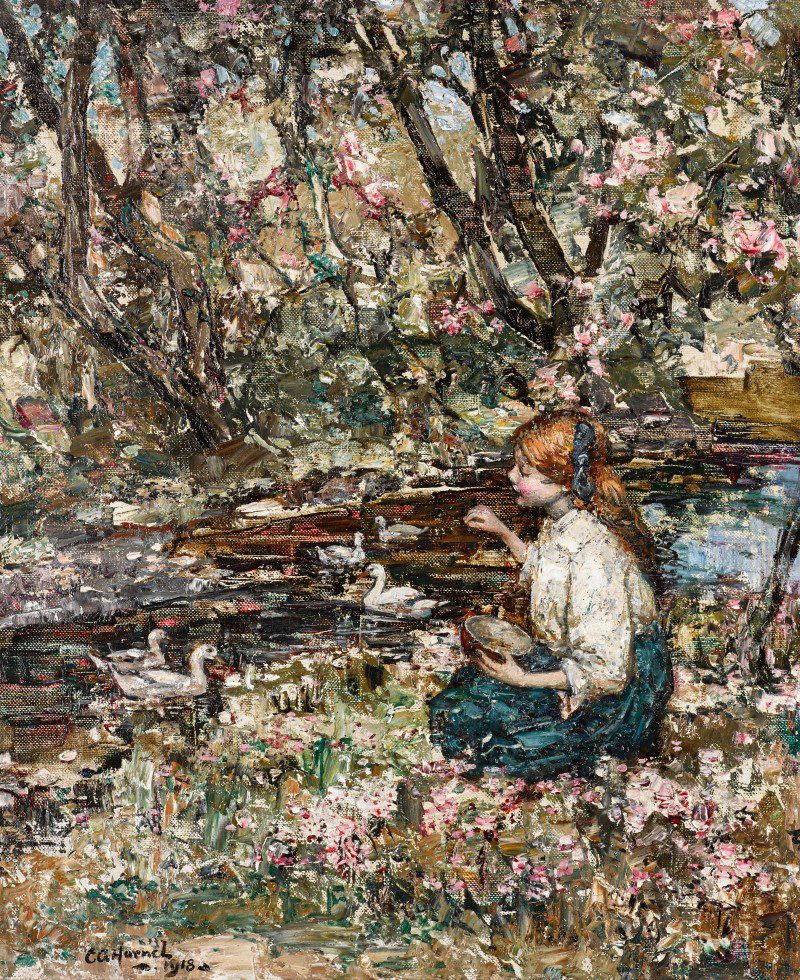
Edward Atkinson Hornel passed away on February 30, 1933, in Kirkcudbright. His legacy is preserved in the collections of major museums and galleries, including the National Galleries of Scotland and the Glasgow Museums. His home and studio in Kirkcudbright have become a site of cultural interest, reflecting his lasting impact on the region’s artistic heritage.
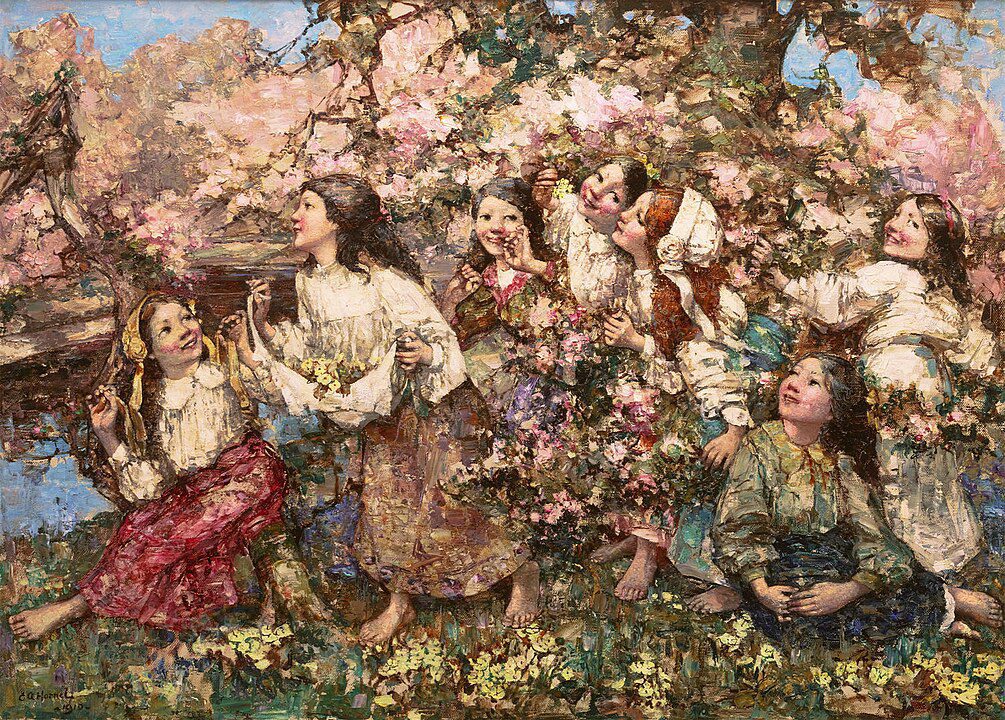
In summary, Edward Atkinson Hornel’s biography is a narrative of artistic exploration and synthesis. His work stands as a testament to the fruitful dialogues between Eastern and Western art traditions at the turn of the century. Through his vibrant and decorative paintings, Hornel contributed to the broader currents of British art, leaving behind a body of work that continues to be celebrated for its beauty, originality, and cross-cultural influences.



